The next-gen MacBook Pro with Retina Display Review
by Anand Lal Shimpi on June 23, 2012 4:14 AM EST- Posted in
- Mac
- Apple
- MacBook Pro
- Laptops
- Notebooks
Final Words
Apple has done an incredible job with the next-gen MacBook Pro. It brings a level of portability to the 15-inch chassis that we’ve never seen before from Apple, all while getting a good handle on some of the thermal and noise issues from last year’s model. If you’re like me and have to lug your 15-inch MBP around, the improvements in portability alone are worth the upgrade. But a lighter chassis is hardly all Apple is relying on to sell this system.
The internals are easily the best collection of parts Apple has ever assembled. Ivy Bridge and Kepler are natural fits, but shipping the machine with 8GB of memory by default is a much appreciated gesture especially considering its un-upgradeable nature. For the first time in Apple’s history of shipping NAND flash based storage in Macs, I actually have no complaints about the controller choice in the rMBP. Samsung’s PM830 (or the consumer, SSD 830, version) is what I’ve been recommending to Mac users for much of the past year. It’s still possible that you’ll end up with a non-Samsung controller, and I don’t yet know whether or not that’s a bad thing, but this is at least progress.
The connectivity story on the rMBP is near perfect. The pair of Thunderbolt ports allows extra flexibility as well as the ability to drive more bandwidth to external IO than any prior portable Mac. The Thunderbolt teething issues still remain unfortunately, but it looks like that’s going to require at least a partial act of Intel to rectify. USB 3.0 is a welcome addition to the Mac family. It took both Apple and Intel far too long to get to this point, but I’m glad it’s here.
All of this is really just wrapping however, as the real gift is the MacBook Pro’s first Retina Display. It’s easily the most beautiful display I’ve had the opportunity of using. Even more impressive to me than the iPad’s Retina Display, and enough to make me actually want to use the Mac as a portable when at home rather than tethered to an external panel. The added portability of the chassis likely contributes to that fact though.
The credit Apple deserves for the display extends beyond simply pushing LG to get a panel out on time and in large enough quantities. There’s a tremendous amount of software work that Apple put into making the Retina experience work under OS X. The OS and several key applications have been updated to properly support the MacBook Pro’s Retina Display, and things can only get better from here. Mountain Lion will improve performance and I would expect at least a few key app updates over the next year to bring increased Retina awareness.
There’s also the behind the scenes work Apple put in to make all of this happen. The pressure on the GPU vendors, as well as taking matters into its own hands with writing scaling and filtering routines to deliver a good experience are all noteworthy.
It’s because all of this that I’m doing something I’ve never done before in an Apple review. We rarely give out Editor’s Choice awards at AnandTech, and I’m quite possibly the stingiest purveyor of them. I feel that being overly generous with awards diminishes their value. In this case, all of the effort Apple has put into bringing a Retina Display to the MacBook Pro is deserving of one.
 I’m giving the MacBook Pro with Retina Display our bronze Editor’s Choice award. Making it the first Mac to ever receive one. It would have been a silver had the software story been even stronger (iWork, Mountain Lion, Office and Photoshop being ready at launch would have been a feat worth rewarding). And it would have been a gold had Apple been able to deliver all of that but without sacrificing end-user upgradability. Which brings me to my final point.
I’m giving the MacBook Pro with Retina Display our bronze Editor’s Choice award. Making it the first Mac to ever receive one. It would have been a silver had the software story been even stronger (iWork, Mountain Lion, Office and Photoshop being ready at launch would have been a feat worth rewarding). And it would have been a gold had Apple been able to deliver all of that but without sacrificing end-user upgradability. Which brings me to my final point.
I accept the fact that current mobile memory and storage form factors preclude the creation of the thinnest and lightest form factors. But I would like to see Apple push for the creation of industry standard storage and memory form factors that wouldn’t hinder the design of notebooks like the Retina Display equipped Macbook Pro. As Apple has already demonstrated that it has significant pull with component vendors, this should be possible. The motivation behind doing so is no different from the motivation driving the use of Retina Displays: for the betterment of the end user experience.
Sidebar: Impacting the Rest of the Industry
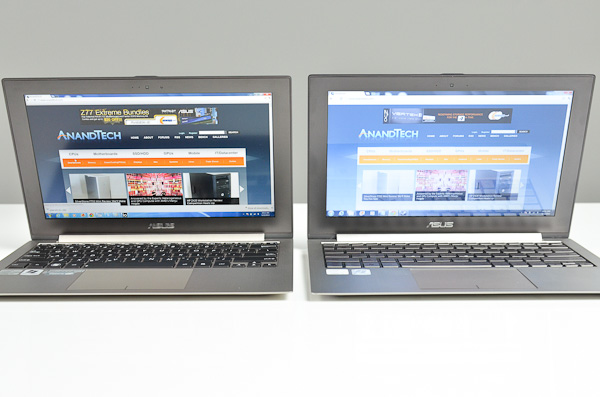
ASUS Zenbook Prime (left) vs. Zenbook (right)
Apple’s impact on the industry has already been felt. The threat of Apple bringing Retina Displays to its entire lineup forced ASUS’ hand and gave us 1080p IPS panels in the new Zenbook Primes. This will undoubtedly continue. In the early days Apple simply raised the bar for a focus on industrial design. Apple’s influence quickly expanded to touch everything from packaging to trackpads. We’re now seeing PC OEMs focus far more on experience than they ever have before. Apple isn’t the only one to thank for this, but the company is a significant factor.
The fact of the matter is the days of blaming a lack of innovation on cost or the inflexibility of one’s suppliers are over. In fact, those days are long gone. Today the MacBook Pro with Retina Display exists at a very high starting price, but make no mistake, it won’t remain there indefinitely. Apple introduced this model as the next-generation MacBook Pro because it truly is a preview of what’s to come. Maybe next year’s model won’t be any cheaper, but the one after that definitely will be. Apple has a healthy obsession with high quality displays and it will put its might behind panel suppliers until it can put forth a lineup of top to bottom Retina Displays. There’s no doubt in my mind that within the next 12 - 24 months Apple will introduce an external 4K Retina Display. Whether you love, hate or are indifferent about Apple and its products, its impact on the industry is tangible. PC OEMs now care about display quality and keyboard feel. They care about trackpads and design. There’s only one motivator in this industry stronger than Moore’s Law: experience, and the PC OEMs finally care about that too.
Apple’s success hasn’t been because it is a vertically integrated company. On the contrary, everything Apple has done Acer, Dell, HP, Intel, NVIDIA and Microsoft could have done together. Apple is successful because its competitors have all been selfishly focused on themselves rather than all coming together to build better computers. Based on my conversations with Intel and some of the OEMs at Computex earlier this month, the wake up call has been heard. Intel seems quite motivated to help its OEM partners do better. It is a bit troubling for the ecosystem that Microsoft is throwing its hat into the ring as a competitor - especially as it was Microsoft's inaction on the software side that really hurt the PC OEMs over the past several years.
For years we’ve been pushing OEMs to focus on better displays, and for years we were given cost and customers-don’t-care as excuses for why we don’t get them. That’s all starting to change.


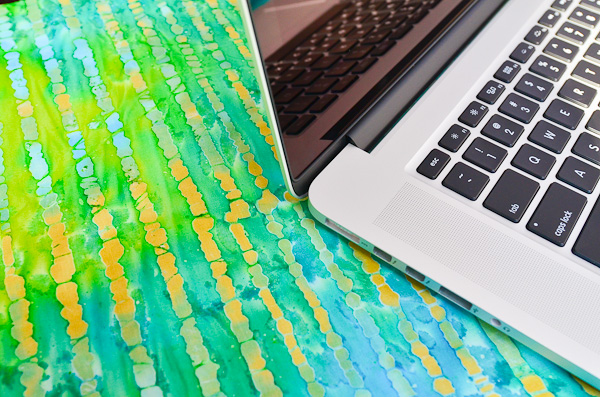
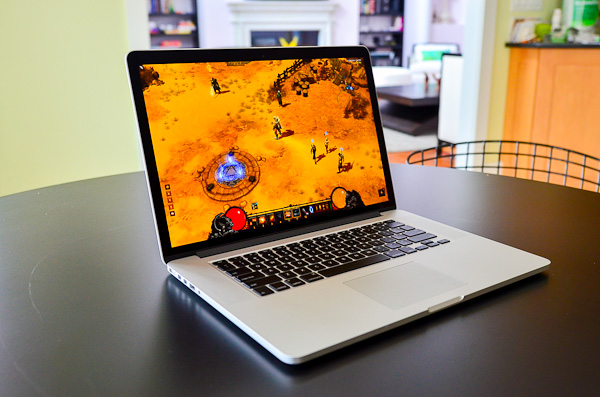
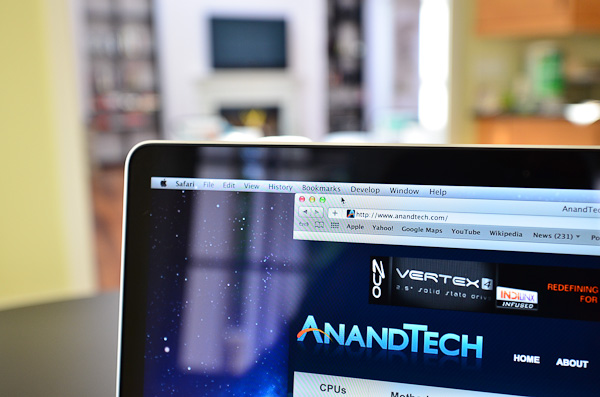
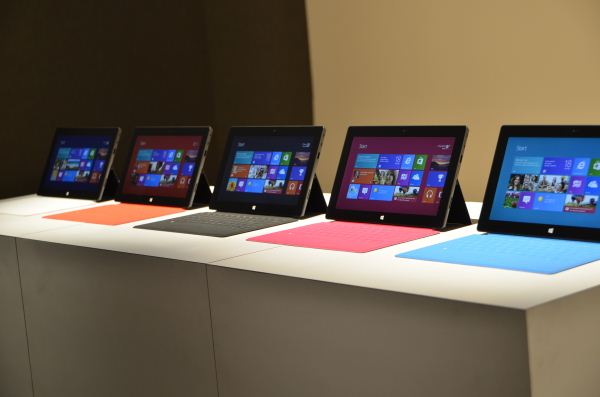








471 Comments
View All Comments
rs2 - Monday, June 25, 2012 - link
...the $2200 one that doesn't include an optical drive and has nowhere to put one. It's not like I want my $2200 device to be usable as an impromptu blu-ray player or anything like that. No, I have money to burn buying extra appliances that do things that my pricey laptop should be able to do, but can't.That's what I might say if I had a hole in my head, at any rate.
rs2 - Monday, June 25, 2012 - link
Also, statements like this seem at least somewhat questionable:"The absence of an integrated Gigabit Ethernet port will surely bother some, but Apple offers a Thunderbolt to GigE adapter for $30 to accommodate."
So Apple leaves out a feature that many people would expect as standard in a high-end laptop, but it's okay because they also happen to sell an optional, paid add-on accessory that provides gigabit ethernet connectivity? Same goes for their $10 power-supply adapter cable.
How about calling them out for trying to nickel-and-dime people to death?
Fx1 - Monday, June 25, 2012 - link
God people like you make me sick.95% of people never used the ethernet port. i would rather than 25% shaved off the profile and weight. 10$ isn't much if your one of the sad people to have to use an ethernet.
Spending £2000 on a laptop I'm not going to care about £7 on a adapter
Spunjji - Tuesday, June 26, 2012 - link
Chill. Either you're sick a lot or you're being hyperbolic...Putting Ethernet in won't increase width by 25%. There are many, many ways to do it and there are thinner laptops out there that support it, even if using hideous dongles. Furthermore there are a wealth of legitimate reasons for wanting it.
Basically what I'm saying is, STFU noob.
Spunjji - Tuesday, June 26, 2012 - link
Yay for paying for baseline features! That adaptor should come as standard with a laptop this expensive. Their penny-pinching with respect to their actual margins is infuriating.ramb0 - Monday, June 25, 2012 - link
Thanks Anand, nice description of what's going on here with the Retina scaling.How is it possible that a 600x600 (for example) image looks better on the rMBP than it does on a standard MBP, and occupies the same amount of screen realestate?
I understand the Backing Scale of 2.0 draws the pixes 4 times more, so therefore appears the same size as on a 1440 screen, but i don't understand how this works for a .jpg image for example.
If it is just using pixel doubling, wouldn't the quality between the "retina" display and normal display be exactly the same, because it is just multiplying each pixel by 4. So essentially you end up with 4 pixels that are the same as each one.
Also, on a separate note, it would be great if you could set the text & UI elements in scale mode of 1680 x 1050 or 1920 x 1200, but keep the "work space" elements as native 2880x1800 (Backing scale 1.0).
wfolta - Monday, June 25, 2012 - link
As I understand it, the image will not look better. Images on disk, say, can look better (because you see pixels you couldn't have seen before). Some websites, like Apple's, will feed you higher-density images than if you were browsing with another machine, and obviously those will look better.Lepton87 - Monday, June 25, 2012 - link
Somehow I doubt that you would be so lenient towards any other company, but if there are glitches in apple hardware it's your fault by your own admission or someone else is at fault. Way to stay neutral and impartial.
Evil_Sheep - Monday, June 25, 2012 - link
Wow, a real bronze medal from Anand! Fewer of these are handed out than Olympic bronze medals in odd-numbered years. And all Apple had to do was innovate and ship a completely revolutionary computing paradigm in displays which, in stark contrast to its PC competition, works virtually flawlessly from day one right down to reprogramming minute graphics routines and on a topic Anandtech has been loudly harping on for years.But never let it be said that Anandtech is too generous with its awards.
Freakie - Monday, June 25, 2012 - link
Hey Anand, or any other employee of the website, aren't there a few parts of this review that very specifically break your traditional object reviews of products and hardware? I mean, it's fine to be excited about something, as Anand is obviously about this laptop, but I think he is so excited that the website's integrity is a little bit compromised. I realize that anyone from the website reading this will recognize that I don't have any right to speak about the integrity of an article written by Anand himself on his own website, but I feel like it should be said anyways, in hopes of keeping your minds clear and objective.It's just things like praising the fact that they got rid of an extra piece of glass on the screen, and how much praise Anand gave for this admittedly stupid thing to point out. As Anand said, this is a matte screen, not a glossy screen, so there being an extra piece of glass in the front would be completely ridiculous, right? The only mention of other matte screens is that those who have used a matte screen in the past are used to not having a protective piece of glass or plastic in between them and when the real LCD starts. Other than that, there isn't anything special about it not having that extra piece of glass. Yet it just baffles me how much Anand goes on about how it has magically been engineered away somehow.
Sorry if I sound pretentiously opinionated. I just really felt that the integrity and methodical reviews that so many people come to Anandtech.com for feels very lacking in this review >_<